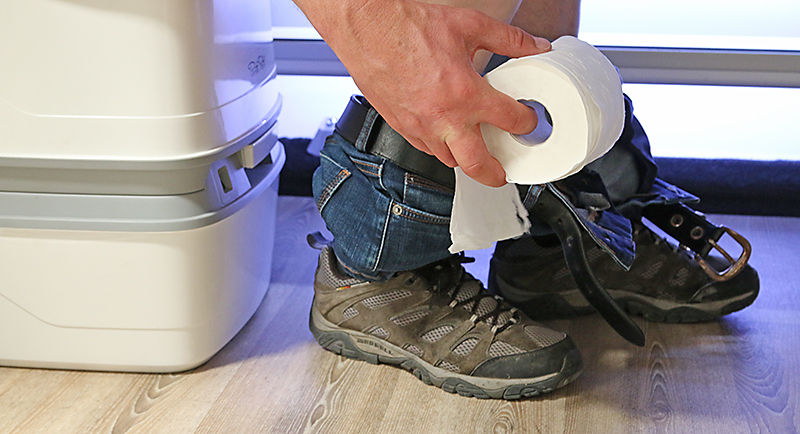
Changing the way we go to the loo
For as long as I can remember, we’ve been using a portable toilet for camping trips. Back in our Tvan days, it was the humble Porta Potti that took care of business! Perched on the corner of the hard floor, it was readily available for overnight visits without stumbling too far, and reduced movement translated to an easier transition back into deep sleep.
But the caveat was the use of toilet chemicals. Over the years we’ve tried liquids, tablets, and more recently sachets. They all smell; not as much as what’s in the pot, but unpleasant all the same. Crack a new bottle of toilet disinfectant and find a suitable place to store it, as it will stink out any cupboard, and that’s with the lid on!
Liquid Chemicals
Chemical toilets are great for the black bitumen tourers. Most RV Parks have a waste disposal station, and more and more towns are RV Friendly with their own free dump point.
Yet step off the blacktop and those disposal sites quickly erode. Other options include digging a hole and burning toilet paper or using long drop toilets, but they all ahve their limitations.
Powder Chemicals
Over the last few years, we’ve been using a product called Ezy Go Now for our off-road adventures. Simply line your toilet bowl with a special plastic bag, scoop in a measure of Poo Powder, and go for it. The powder encapsulates the waste, deodorises, and it’s ready for disposal with other rubbish. Simply tie a knot in the bag! It saves digging when the ground is too hard and using long drop toilets that may be too far from your campsite at night.
One of the other challenges of a cassette style toilet is the small volume capacity. As each visit results in a flush of water in addition to the waste, quickly filling the cassette.
Caravan style cassette toilets will often delete the top tank to save space, meaning that the unit is plumbed directly to the onboard water supply. Without a top tank, there’s no holding area to add the flushing additive that prevents the loo from smelling like a public toilet and lubricating the seals. You can still use a spray bottle periodically, it’s just not as convenient.
SOG Toilet Conversion
A worthwhile modification to a van cassette toilet is a SOG conversion, making it chemical and odour free. When the toilet blade valve is opened, fresh air is drawn into the waste tank, speeding up decomposition. A ventilator pushes the odours out of the holding tank through a filter fitted to the external cassette door. This type of modification typically costs around $595 if installed during manufacture.
While the SOG system deletes the chemicals aiding in disposal, it’s still limited by the size of the cassette.
Macerator Toilets
Macerator toilets provide an alternative option for waste disposal. The macerator pump slices and dices the waste and pumps to a large black waste tank mounted under the camper. However, this can contribute to a lot of additional weight to be carried.
Composting Toilet
Our new Kimberley Karavan has a composting or waterless toilet. It’s more environmentally friendly as it uses a composting agent such as peat moss or coconut coir rather than chemicals to help break down the waste. Number ones are separated from number twos, with the ones captured into a large waste bottle which is emptied as required. The twos go into the base of the toilet with the composting agent and toilet paper. A side mounted churn handle helps blend the waste and a ventilator system like the SOG toilet, draws fresh air in and vents odours though a filter to the outside. With claims of capturing up to 80 visits, it is a much better option, being both chemical free and long lasting between empties.














